At Colorectal Specialists we offer painless and easy colonoscopy screening exams performed by Ohio's leading colon physicians. We like our patients to feel comfortable and informed about their experience. The following is a guide about having a colonoscopy.
What is a colonoscopy?
A screening colonoscopy is an easy, outpatient procedure to prevent the formation of colon cancer.
Looking at the inside lining of the colon is one of the most important exams you can have to prevent colon cancer. This is done with a small, fiber-optic, camera called a colonoscope. When a colonoscope is used to look inside the colon, we call the exam a colonoscopy. To understand the term " screening colonoscopy ," we should discuss some basics on how colon cancer develops.
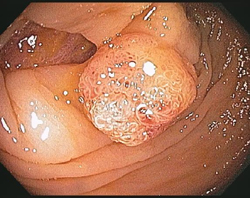
This is a colon polyp.
All colon cancer begins as a small growth called a polyp. As we age, polyps grow more frequently throughout the inside of the colon.
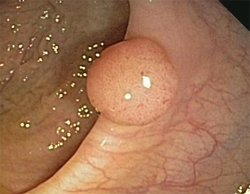
Over time some of these polyps may change from harmless to harmful and will require a colonoscopy for removal to prevent the growth of colon cancer.
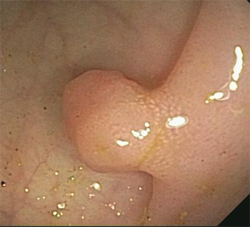
A " screening colonoscopy " refers to performing a colonoscopy to look for these polyps and remove them before they become colon cancer.
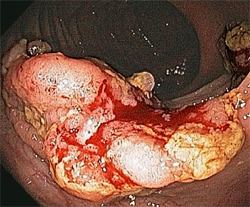
This is Colon Cancer
A screening colonoscopy is also performed to detect colon cancer early. The earlier colon cancer is found and removed, the better the outcome.
Having the colonoscopy
Having a colonoscopy is an easy, painless exam. While you are comfortably asleep, the colonoscope is carefully inserted and gently advanced through the colon. Air is used to inflate the inside of the colon. This allows visualization of polyps and other abnormalities.
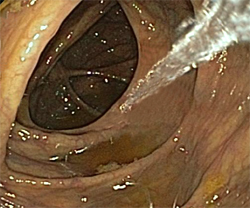
As the colonoscope is carefully removed, the colon is gently washed with water to ensure polyps are not overlooked.
This is a picture of a normal colon. Off to the right is a stream of water, washing the inside of the colon to ensure colon polyps and colon cancer are not missed.
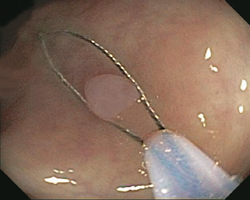
If any polyps are found, the physician has special tools which can be placed through the colonoscope to remove them.
This is a picture of a small colon polyp being removed with a special tool called a "snare". The snare is a small wire lasso which encircles the polyp and pinches it off at the base.
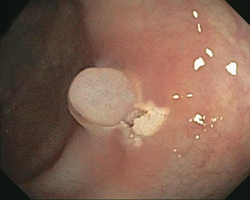
Fortunately, the colon cannot feel pain. You will wake up without knowing polyps were removed.
This is a picture of the same polyp after the snare pinched it off. It will now be suctioned through the colonoscope for examination.
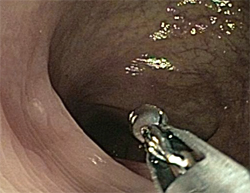
This is a picture of another special tool used to remove polyps. This tool is called the "forceps". The end of this tool opens wide and can pinch off a polyp as it closes. The polyp is then retrieved from inside the forceps for examination.
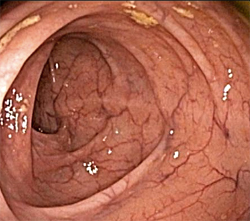 .
.
As the colonoscope is removed, air is suctioned out of the colon to prevent gas cramping when you wake up.
This is a picture of a normal, healthy colon which is inflated with air. Air may cause cramping if left inside the colon. Most of this air is removed at the end of the exam.
Once the colonoscopy is complete, it typically takes half an hour or so for you to wake up. Dr. Reed will talk with you after the exam, but you may not remember what was said. They will discuss all findings with you again one week after your colonoscopy. Once you wake up it's time to get a nice breakfast and relax.
Next Chapter 2. What are Polyps?

